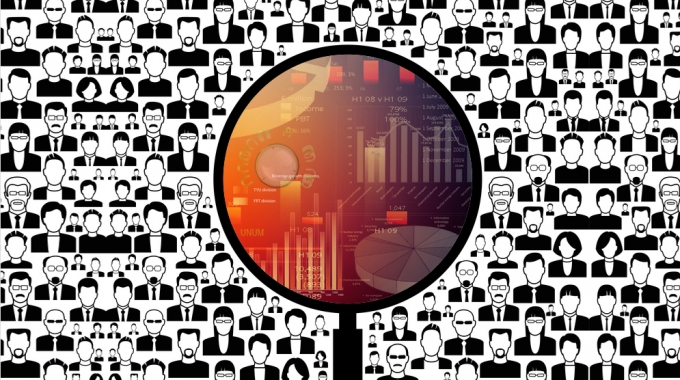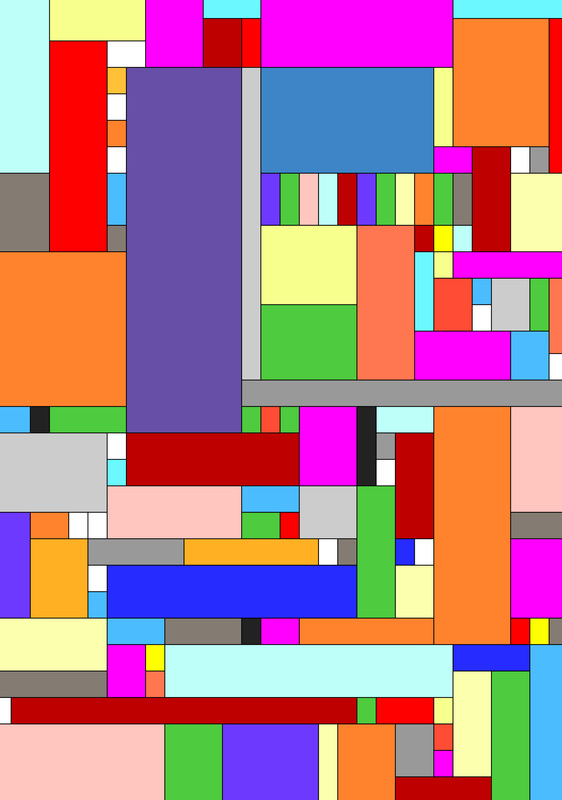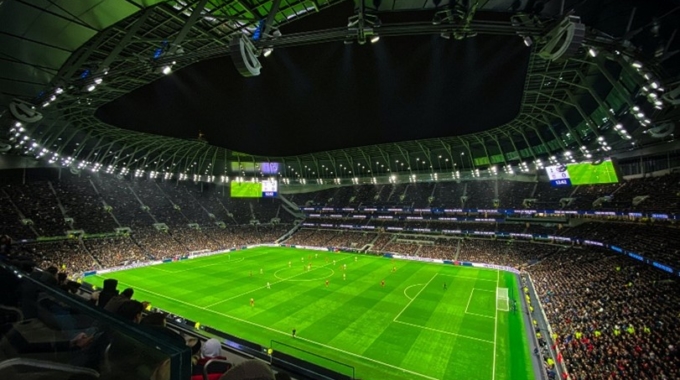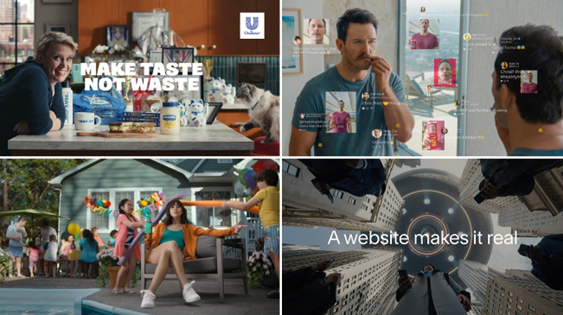
“Collective Intelligence Art will teach us to ‘inhabit the world in a better way’ – pooling our intellectual resources, becoming as one.”
— Mathew Aldred, Artist
Mathew Aldred is a Nova Scotia based artist exploring the symbiosis of art and science. His work spans a range of mediums, from digital imaging and drawing, to painting and sculpture. His most recent project, Nexus, started off by simply asking online users to use basic voting tools to make artistic decisions in the composition of a piece. But now, the artist’s partnership with UNU allows the participants to collaborate in real-time as part of a unified Swarm Intelligence. This means Aldred can explore the artistic potential of an emergent group intelligence in the creation of art.
We sat down with the artist to discuss Collective Intelligence Art ( CI-Art ) and his pioneering work to enable the world’s first Emergent Collective Artist. We had many questions, wondering what it’s like to guide a Artificial Swarm Intelligence into creating artwork. Here’s a summary:
>QUESTION: Can you explain what you mean by Collective Intelligence Art for those unfamiliar with the term?
ALDRED: CI–Art is basically groups of people connected remotely via the Internet, working together in real-time, focused on the creation of art objects in the form of digital drawings and paintings. As the creator of these events, my interest is on the ‘relational aesthetic’ (Bourriaud 2002) – the interactions and relationships of the participants. The art object simply mediates the emergence of a CI focused on the creative act.
My experiments suggest that CI–Art is not only possible, but also worthy of continued research as it holds the possibility of creating art micro-eutopias (realisable ‘good places’, not impossible ‘Utopia’); or, more skeptically, at least altering our perceptions of our own identity, ‘Self’, our consciousness, and relationships with others in the Information Age.
>QUESTION: Your earlier work used to vote on artistic decisions. How does UNU change what is possible in this space?
ALDRED: The ability of a CI to create art is only now realizable due to very recent developments in technology – most notably the relative ubiquity of the Internet, social media networks, collaborative media apps, such as Google Apps, and the UNU swarm-intelligence platform. Of course, like many form of art, it’s much easier to show the work process than try to explain it. So I made this quick video:
[iframe id=”https://www.youtube.com/embed/nPUYFvp-7nI”]>QUESTION: What have your learned from this process?
ALDRED: The Nexus experiments have shown that the unique qualities of every CI–Art event are due to the unique qualities of every individual that participates. This means the overall effect enables something that transcends any individual, a form of artificial intelligence. In a CI there is continuous negotiation, as Dr. Pierre Levy said, ‘individual acts are coordinated and evaluated in real time’. The CI–Art form ‘merges the negotiations, contacts, decisions, and effective actions of those involved in the continuous creation of a shared world.’
>QUESTION: So, who is creating the drawing or painting?
ALDRED: The CI can be thought of as an AI, or a global brain, or as Dr Louis Rosenberg calls it – “a brain of brains,” with its own unique views, personality, insights, and aesthetic sensibilities (Rosenberg, 2015). This is supported by neuroscientist David Eagleman’s conception that any single brain is a democracy ‘of multiple, over-lapping experts who weigh in and compete over different choices. There is an ongoing conversation among different factions in your brain ‘ (Eagleman 2012, p. 107 ). Similarly, in CI-Art, there is an ‘ongoing conversation’ – not with words, but actions – voting, adding lines/colours and taking away – which produces the final artistic image – the creative expression of the unique artistic sensibilities of the collective entity. That said, the “art” is not simply an art object, but the participatory event, which is about the emergence of a CI and its unique expressions.
>QUESTION: What is your role as the artist?
ALDRED: I see my work as artist in the conception of the experiments, their facilitation, their direction, their initial conditions. At the same time, this work is not designed, or simply generative or made to formula; one of the things that interests me about the work is the way that it is not predetermined. You cannot know how the CI will work, because each CI-Art event is a unique set of interactions and relationships.

Aldred: “Nexus 4.3 was an experiment in CI-Art ‘Flash Mob’ style – 24 participants met through UNU and came on-line for just 30 minutes! They had never participated in one of these events before; and even though they only had 30 minutes together they still managed to give the piece a title– Mid Spring in UNU”
>QUESTION: What’s the potential of this art-form?
ALDRED: If we think of individual brains as part of a global network of brains, we begin to understand the possibilities for a CI-Art; ‘each of our brains operates in a rich web of interaction with one another…What we demarcate as you is simply a network in a larger network’ (Eagleman 2015, p.158). The participants in CI-Art are not physically connected, but their individual neural networks are coupled via the communication infrastructure.
>QUESTION: But how do we “judge” CI-Art if we can’t say which person created it?
ALDRED: CI-Art is perhaps best understood in a ‘relational aesthetic’ framework of analysis. According to Nicolas Bourriaud, ‘the essence of humankind is purely trans-individual, made up of the bonds that link individuals together in social forms …the inter-human game which forms our object’ (Bourriaud 2002, p. 18). CI-Art proposes new inter-human relations, and its aesthetic is best judged by its participants, on ‘the basis of the inter-human relations which they represent, produce or prompt’. Of course, as the artist responsible, critics will judge me; but I hope they will participate in the events with an open mind. I’m confident that if they do that they’ll begin to see and feel the operation of the CI, and this experience will be for them the art.
>QUESTION: Do you think CI-Art will ever show up in the Louvre next to the Mona Lisa?
ALDRED: Bourriaud suggests that art as participation is to be valued more highly than art as commodity, ‘a luxury, lordly item’. In CI-Art the art object mediates the event; it is not to be thought of simply as a product or commodity. CI-Art creates a ‘social interstice’. That is, a place to learn ‘to inhabit the world in a better way’ – pooling our intellectual resources, becoming as one. CI-Art is a ‘micro-utopia of inter-subjectivity’ (Bourriaud, 2002), or as I prefer (since Utopia has long been connected with impossible dreams) – a ‘micro-eutopia’ (‘good place’).
To be part of a Collective Intelligence, you can try swarming: HERE
Mathew is planning a new Nexus session that will involve the largest swarm he’s ever worked with – 100 people working as a unified Swarm Intelligence to create a single piece of art. If you’d like to be part of the swarm, please fill out the form below and mention the word ART in the comment section.
BIBLIOGRAPHY:
- Bourriaud, N 2002 Relational Aesthetics. Les Presses Du Reel
- Bishop, C 2012 Artificial Hells: Participatory Art and the Politics of Spectatorship Verso New York
- Eagleman, D 2015 The Brain – The Story of You Penguin Random House, New York
- Eagleman, D 2012 Incognito – The Secret Lives of the Brain Penguin Random House, New York
- Levy, P 1997 Collective Intelligence – Mankind’s Emerging World in Cyberspace. Perseus Books, Cambridge, Mass.
- Nexus Project website: NEXUS
- Rosenberg, L 2015, Human Swarming, a real-time method for Parallel Distributed Intelligence, Proceedings of IEEE Swarm/Human Blended Intelligence, 2015, Cleveland OH, USA.
- Rosenberg, L 2015 Human Swarms, a real-time method for collective intelligence. Proceedings of the European Conference on Artificial Life 2015, pp. 658-659
Sign Up to be part of a Swarm Intelligence art project:


